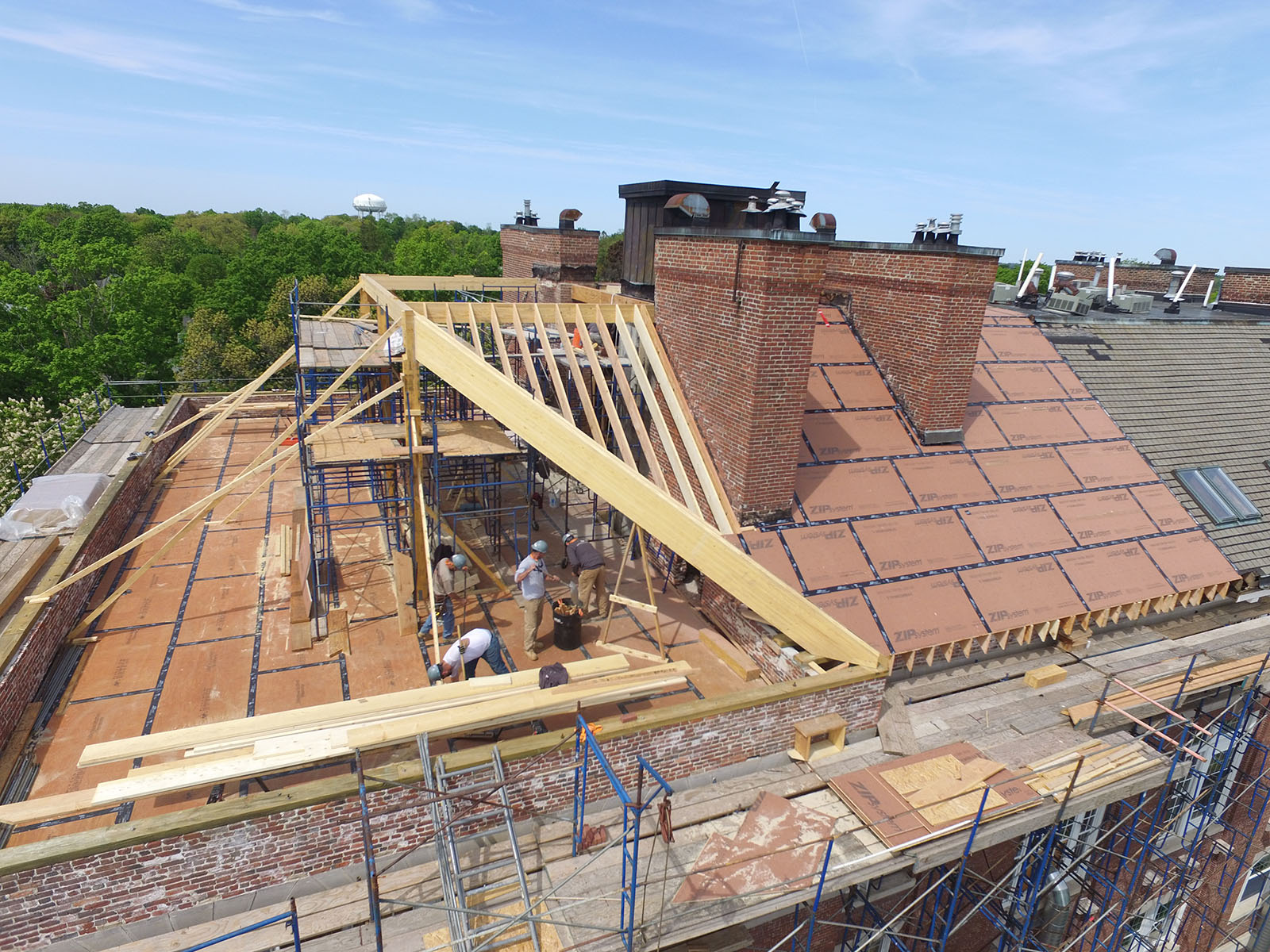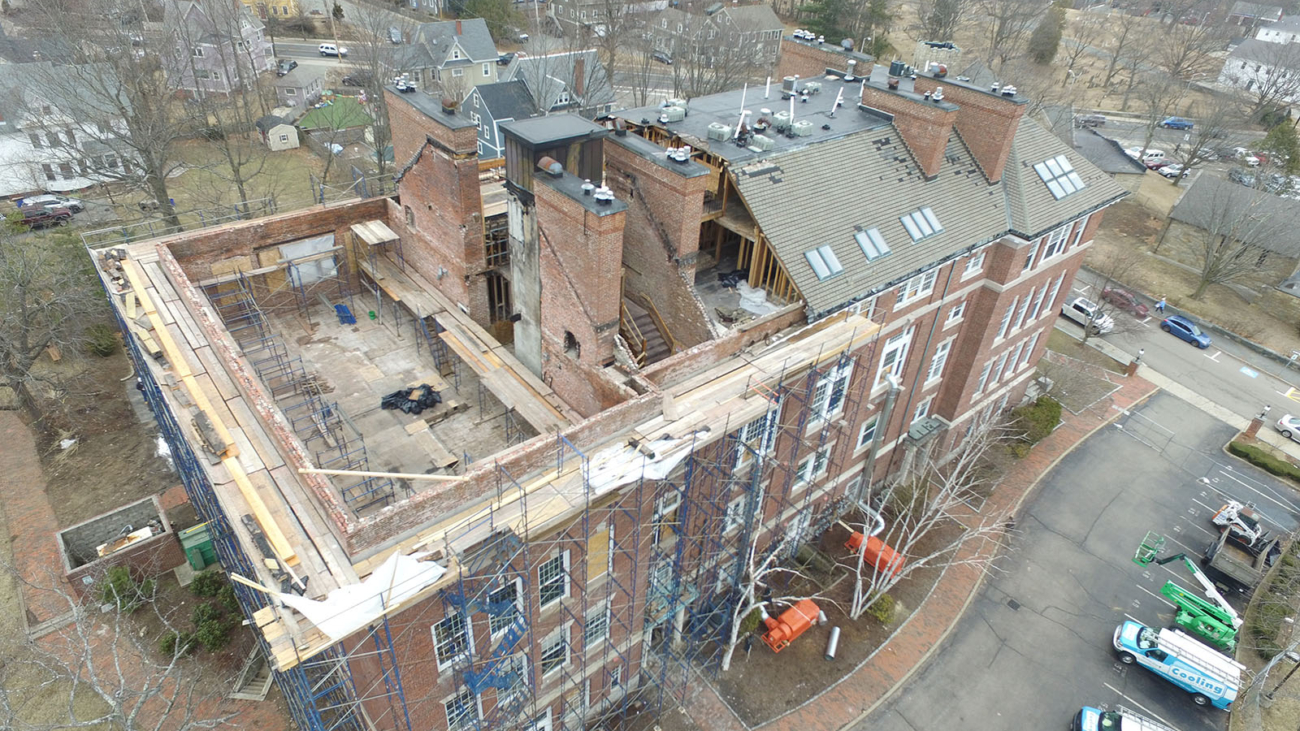In June 2017, a fire enveloped several units of the four-story, 40-unit Old Reading Schoolhouse condo building, which had been converted from a school to a community center, and finally to a residential complex in the 1980s. The building was up to code and had sprinklers in its hallways and stairwells, but not in the individual units, which were not required at the time of the condo conversion.
That’s part of the reason the fire spread quickly through the building’s ceilings and through interconnected construction voids created during the original conversion to condominiums. The result was a 7-alarm fire that involved firefighters from Malden, Stoneham, Boston, Melrose, Wakefield, Lynnfield, Cambridge, Everett, Lynn, North Reading, Medford, Woburn, Somerville, Burlington, Winchester, and Saugus, in addition to Reading’s own fire department. To douse the flames, these firefighters collectively used 1.5 million gallons of water.
But that amount of water also came with a steep cost: the water damage, in combination with significant smoke damage, resulted in damage to every condo unit in the building, including extensive mold damage. Further complicating matters, workers and contractors could not enter the structure until insurance adjusters and inspectors had released the building for remediation – a process that lasted for six months, leaving the building’s interior exposed to the elements, and adding exponentially to the damage.
At a recent Builders and Remodelers Association of Greater Boston (BRAGB) site tour, Scott Wolf, Managing Partner of BRIGS, LLC, spoke candidly about the challenges involved with the reconstruction and preservation of such an historic building, where there were still grooves in the stair treads from years of use by students when the building had been a school. “We had to bring the building up to code while working within a structure built many, many decades ago,” Wolf commented.
BRIGS chose Hopedale-based Landmark Associates as the general contractor for this unique and challenging project. Known for its remodeling and construction management expertise within the condominium and commercial facilities markets (including restoration contracting following fire and water damage), Landmark was excited to tackle this complicated project, and help the displaced residents return to home as quickly as possible.

When the investigation concluded in November 2017, Landmark’s first challenge was to close up the building before the winter elements could inflict further damage. The next phase of the project was construction and renovation. The project included not only the rebuild of the fire-damaged units, but also a variety of other major renovation work, including:
- Rebuilding the entire roof, including skylights and most of the fourth floor which had collapsed onto the third. This was a significant challenge as the age of the building meant that all of the walls were out of level and rafters needed to be cut individually and double beams were needed to stabilize the structure.
- Stripping down all the other units to the stud walls due to mold and water damage.
- Rebuilding those walls within current building codes.
- Installing wiring, gas lines, fireplaces, a new sprinkler system, plumbing, and new windows. In fact, all of the HVAC systems had to be reconfigured based on new code regulations.
“My crew and I had to work within constraints that we had never faced before,” said Tony Chiarelli, President of Landmark Associates and a BRAGB Board Member. “But we are determined to produce living spaces that any of us would be motivated to live in, ourselves. From our perspective, the two biggest challenges were first, fitting today’s codes into an historic building, and second, trying to balance the needs of 40 unit owners who all desire individualized remodeling plans.”
Landmark made extensive use of fellow BRAGB suppliers and contractors during the project. Allegiance Construction and Development provided finish carpentry, while Metropolitan Cabinets and Countertops supplied all the cabinets and countertops for the rebuilt units.

BRIGS is hoping that residents will be able to reoccupy their units this year, and Chiarelli and his team at Landmark are working feverishly to meet that schedule. “The displaced residents have gone through a horrible ordeal; they lost all their possessions and their homes in a matter of hours. We want them to be delighted when they return home,” Chiarelli said. “So while this project has been challenging, it’s also been one of the most rewarding projects in my 30 years of business.”
This article was reposted from the original article published in Bay State Builder Magazine



